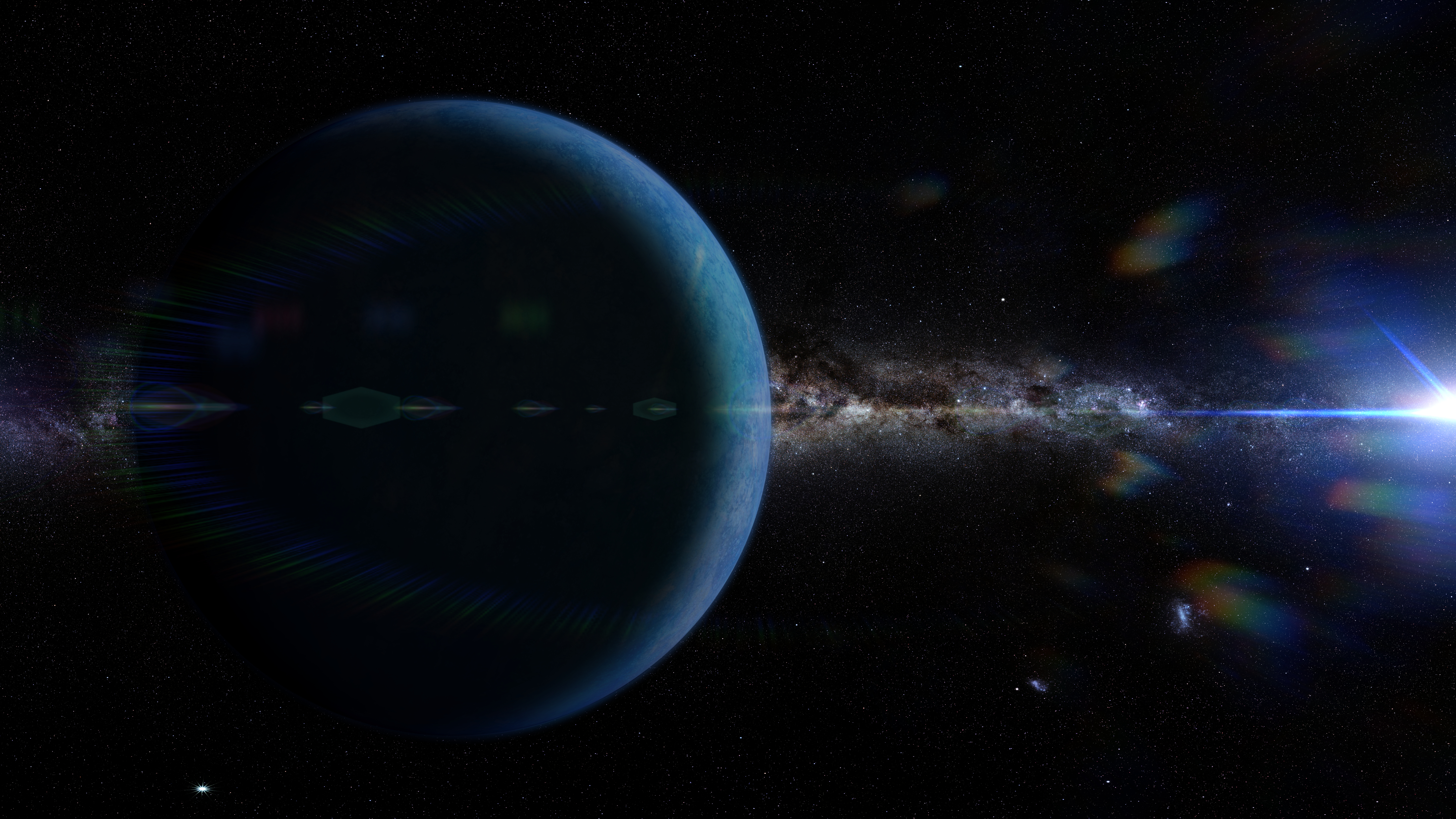Astronomers searching for a ninth planet in our solar system say they’ve found a “good” candidate far beyond Neptune, according to a new preprint study.
This could be humanity’s first glimpse at the long-theorized Planet Nine, which — if it exists — is a giant, undiscovered world distantly orbiting our sun. However, the ninth planet proposal is contentious, and the new findings are unlikely to change that.
Researchers discovered this latest planetary candidate while studying old satellite data. At this stage, the candidate is simply a curious dot across a few infrared images. But the dot seemed to be moving in a way that was consistent with a large, distant planet.
“I felt very excited,” study lead-author Terry Phan, an astronomy doctoral student at the National Tsing Hua University in Taiwan, told Science, recalling the discovery. “It’s motivated us a lot.”
Phan and his colleagues posted their findings to the preprint server arXiv on April 24, which have been accepted for publication in the journal Publications of the Astronomical Society of Australia. However, the preprint has been met with some skepticism.
Mike Brown, an astronomer at Caltech who first proposed the Planet Nine hypothesis with a colleague in 2016, isn’t convinced that the infrared dots correspond to the elusive planet. Brown wasn’t involved in the study, but calculated the orbit of the infrared signal and found that the object would be tilted about 120 degrees from the Solar System’s plane, Science reported. That tilt is much greater than Planet Nine’s predicted tilt of around 15 to 20 degrees, and also means this object would be orbiting in a different direction from the known planets, which all sit roughly on the same plane.
This mismatch “doesn’t mean it’s not there, but it means it’s not Planet Nine,” Brown told Science. “I don’t think this planet would have any of the effects on the Solar System that we think we’re seeing.”
Related: How long would it take to reach Planet 9, if we ever find it?
The predicted position of Planet Nine is meant to explain the irregular orbits of some objects in the Kuiper Belt at the far reaches of our solar system. However, some researchers are unconvinced that these orbits are caused by an undiscovered planet, and the scientific community as a whole is still waiting for any direct observational evidence of Planet Nine’s existence.
If Planet Nine does exist, then researchers have predicted that it’s much larger than Earth and orbits in an unusual pattern billions of miles beyond Neptune — the eighth and, as things stand, final planet in our solar system. Planet Nine’s supposed orbit is so far away from the sun that it would be difficult for Earthling scientists to detect, hence why they’re having a hard time proving or disproving its existence.
The team behind the new study searched for Planet Nine candidates in the data archives of two decommissioned satellites: the 1983 Infrared Astronomical Satellite (IRAS) and the 2006-2011 AKARI satellite, Live Science’s sister site Space.com reported. They were looking for distant objects that moved slowly between one set of data and the next, like the proposed Planet Nine would be doing if it were orbiting our sun.
After ruling out the known objects in the data, the researchers zeroed in on a shortlist of candidates. They then pored over images of these potential objects and eventually came away with what they described in the study as “one good candidate.” The candidate is a dot with the same colors and brightness across the two sets of images, suggesting it’s one object captured by both satellites. Follow-up observations are needed to determine the object’s full orbit, according to the study.
Brown told Science that if the infrared signal is a planet, then based on his calculations, it couldn’t exist alongside the original hypothesized Planet Nine without the two making each other’s orbits unstable. Thus, the new candidate for Planet Nine could be a different planet with the potential to disprove the Planet Nine hypothesis.
The existence of Planet Nine — or any other undiscovered ninth planet in our solar system — will likely remain a contentious subject for now. However, 2025 could prove to be the beginning of the end for the search.
The Vera C. Rubin Observatory, currently under construction in Chile, will open later this year and has the potential to settle the Planet Nine debate. This state-of-the-art observatory will feature the world’s largest digital camera and look deeper into space than its predecessors. Researchers are hoping it will be able to spot Planet Nine within a year or two, if it’s out there at all.
